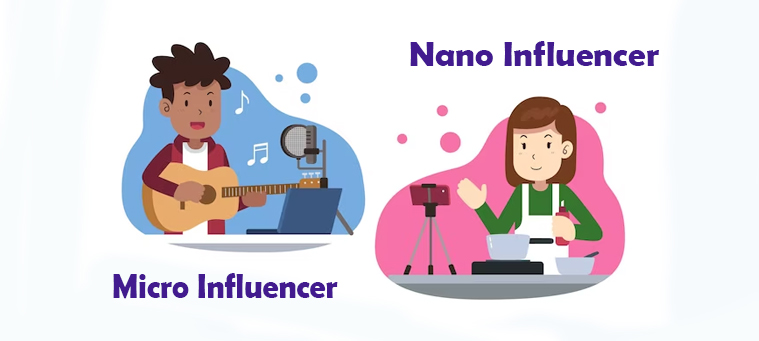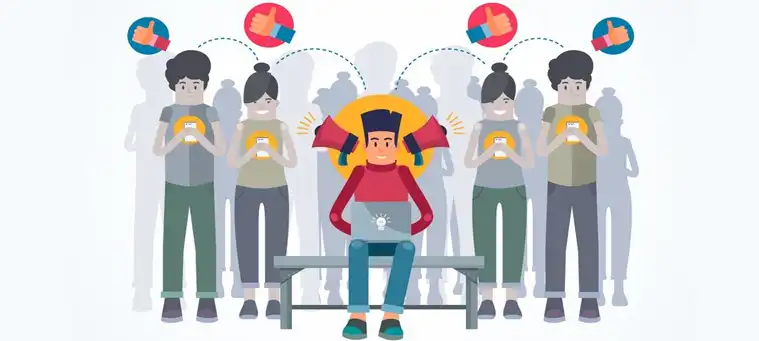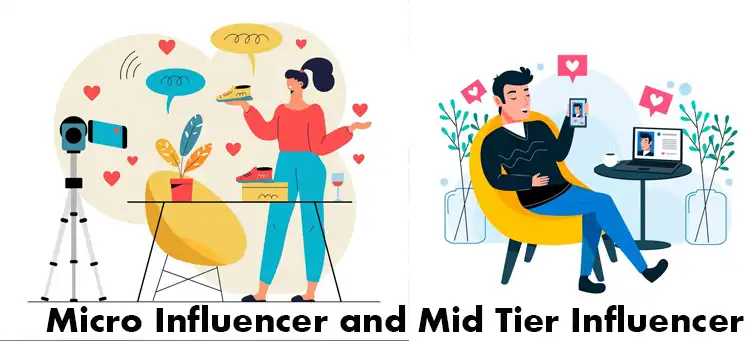Micro and nano influencers – content creators with fewer than 10,000 and 100,000 followers respectively – are becoming an increasingly popular part of brands’ marketing strategies. 92% of marketers say influencer marketing is an effective strategy.
“The Influencer Marketing Industry is set to grow to approximately $21.1 Billion in 2023,” according to InfluencerMarketingHub.
But tapping into smaller influencers also comes with some potential disadvantages compared to working with those that have massive, Kardashian-level followings. So, here’s what are the challenges and potential downsides of using micro and nano influencers and how you can overcome them.

Downsides of Using Micro/Nano Influencers
However, despite their promise, there are also several key downsides brands should be aware of when considering working with micro or nano influencers.
Limited in Reach and Exposure
The most obvious downside is that micro and nano influencers simply don’t have the same reach as those with hundreds of thousands or millions of loyal followers. But brands shouldn’t write them off – there are creative ways to overcome this limitation.
One effective tactic is to partner with multiple micro or nano influencers within your niche. A wider network multiplies the exposure gained.

Fashion brand Revolve saw a 40% increase in conversions by expanding their influencer program to include nano-influencers according to Later.
Niche Audiences Don’t Always Align
While micro-influencers are valued for having highly targeted niche audiences, this can also mismatch with a brand’s broader target market. The content and personalities that appeal to a smaller community may not resonate as well with mainstream consumers.
To fix this, always do your due diligence and focus on finding the perfect match for your product.

Research by Markerly found that engagement rates were highest among influencers in the 1,000 to 10,000 follower range compared to mega influencers.
Inexperience Impacts Content Quality
Many smaller influencers are still honing their craft when it comes to branded collaborations. They may overlook needs like properly disclosing sponsorships, resulting in lower quality or inauthentic seeming promotions that don’t meet brand guidelines.
Vet potential partners carefully by looking beyond vanity metrics and ensuring followers are genuinely active and the influencer has a knack for quality content. Quality beats quantity when it comes to influencer marketing impact.

Rakuten marketing found that nano-influencers drive 7x higher engagement rates on average.
Difficulty Tracking Concrete ROI
With lower volumes of reach and engagement, it can be more difficult for brands to quantify and track their return on investment from micro and nano influencer campaigns. Vanity metrics like likes don’t tell the full story.

To overcome that, you can utilize software tools like Postlane, and Lumanu, or influencer marketing agencies like PromotionalPact to make it easier to track and measure influencer performance across multiple partners and platforms. With nano-influencer campaigns, look for incremental value generated vs. direct sales.
Alternative Strategies and Considerations
While micro influencers come with certain advantages, they should be viewed as just one option within a broader influencer marketing mix. Brands may find value in considering these alternative strategies as well:
Influencer Tier Blending – An effective approach is using a combination of nano, micro, and macro influencers together in the same campaign. This allows you to achieve niche-level engagement among key target demographics while also driving mass awareness through celeb and elite influencer partnerships. Different tiers can meet different objectives.

Long-Term Ambassador Programs – Rather than one-off sponsored posts, committing to an ongoing relationship with brand ambassadors allows for deeper levels of trust and connection to build with audiences. It leads to partnerships that feel more authentic as followers view the influencer as genuinely connected to the brand over an extended time.
Leveraging User-Generated Content – In parallel to formal influencer deals, brands should amplify real user photos, videos, reviews, and testimonials. This authentic content directly from customers themselves carries significant credibility. Develop user-generated content libraries over time.
Contests/Sweepstakes – As an alternative way to organically foster engagement, contests that encourage audiences to participate for a chance to win prizes can successfully draw interest. They allow people to actively express their preferences and perspectives around branded products or services.
Consider Strategically
Micro and nano influencers present unique opportunities and challenges for brands exploring influencer marketing. The benefits like engagement and authenticity must be weighed against limitations around reach, niche focus, and concrete ROI.
With strategic planning, aligned goals, and dedicated management, micro influencers can become valuable partners. But brands must enter these arrangements understanding the need for hands-on effort to nurture partnerships and fully capitalize.
Rather than write off smaller influencers, brands should explore strategic ways to incorporate them as part of a tailored social strategy. With pros and cons weighed, micro influencers can play an impactful role in the marketing mix.

